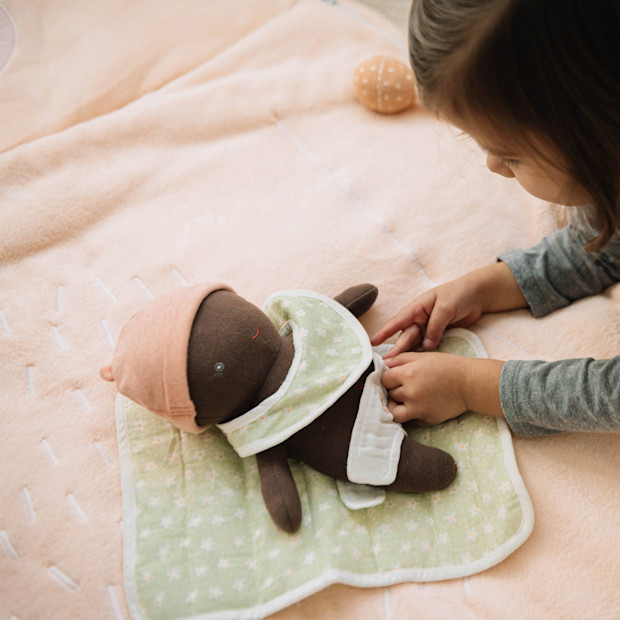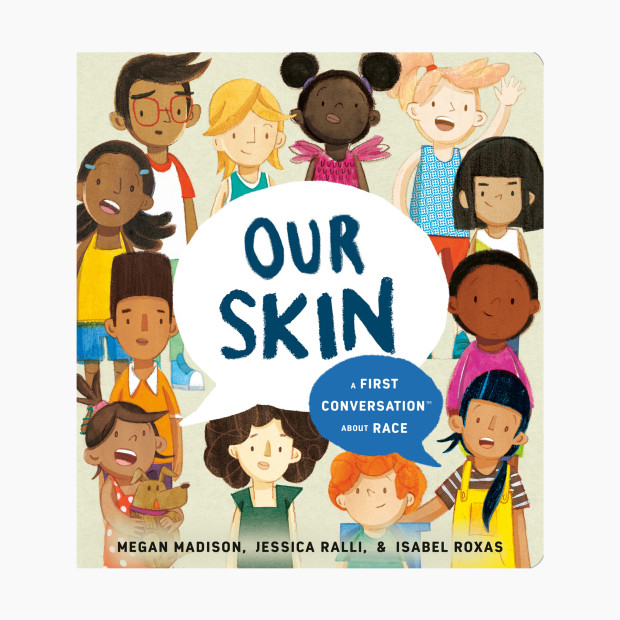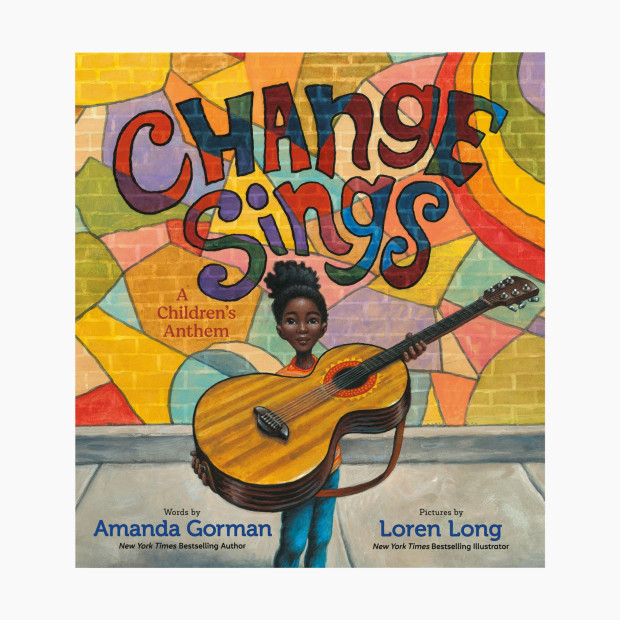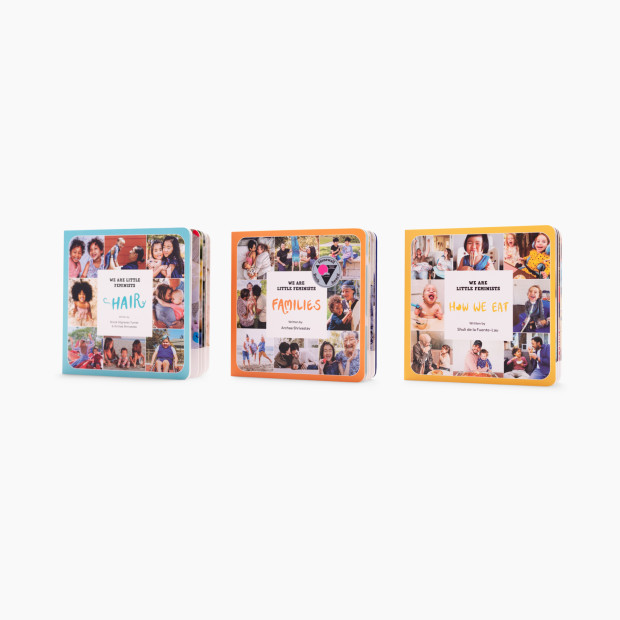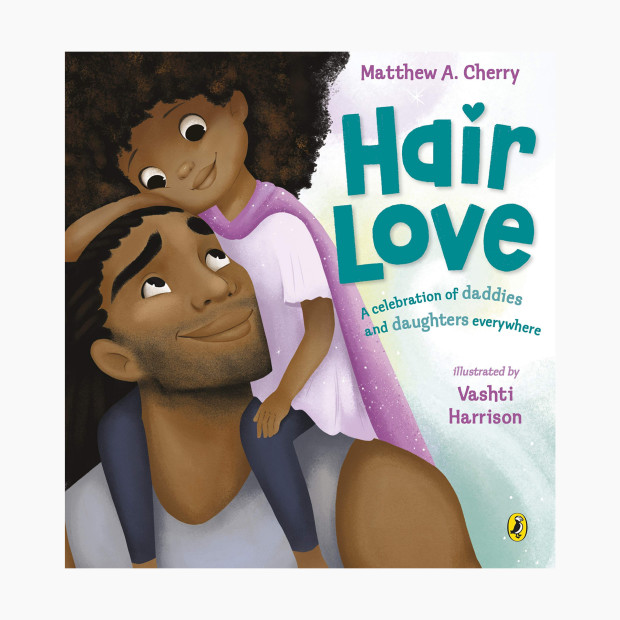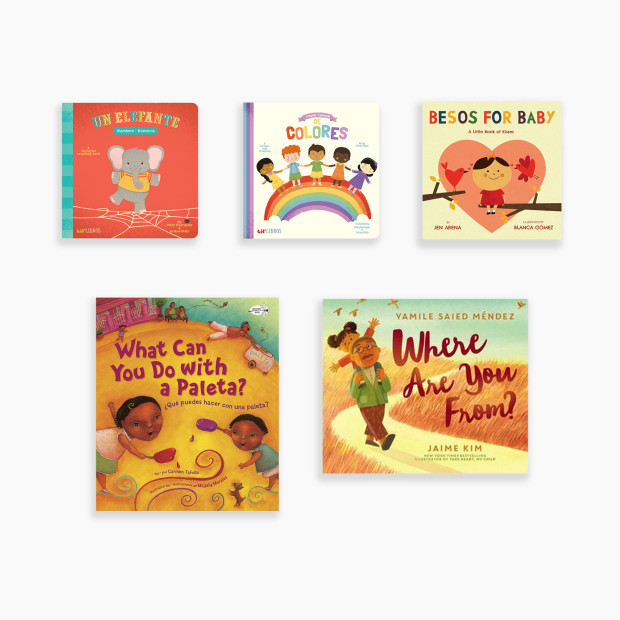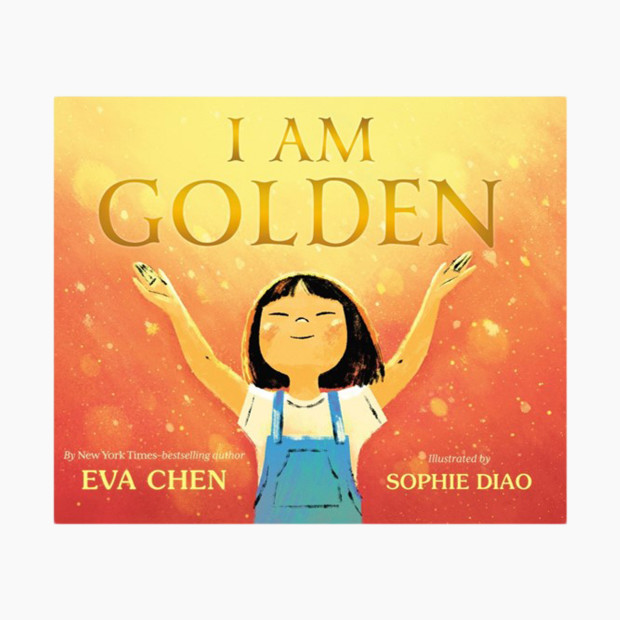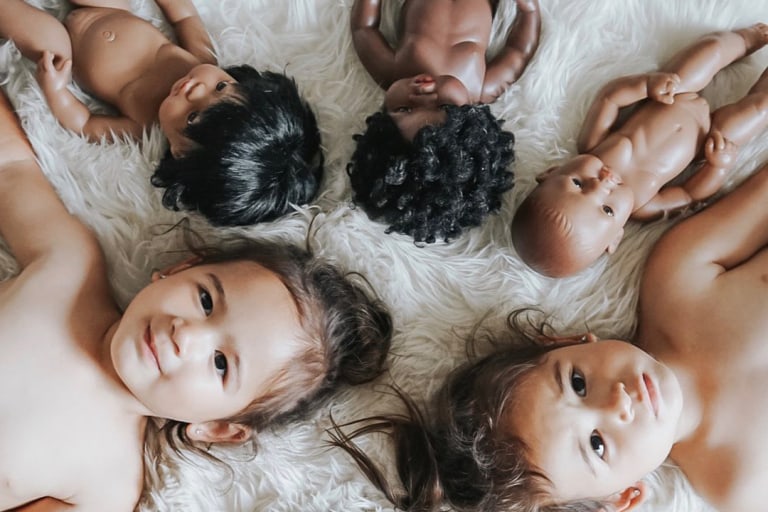
How to Talk to Your Toddler About Race
Race and racism are complex topics. Here’s how (and why) to address them in a toddler-friendly way.

By Amylia Ryan
We know what you’re thinking: Isn’t my baby too young to learn about heavy topics like race and racism? They won’t start to notice people’s differences until they start school? Aren’t children “color blind”?
You might be surprised to learn that babies as young as six to nine months old can start to have skin color preference. Studies have shown that babies will express positive emotions (familiarity) toward people of the same skin color as themselves and their caregivers, and express negative emotions (unfamiliarity) toward people of different skin colors.
As early as three years old, toddlers may start to associate a person’s race with their behaviors. That level of prejudice can be disconcerting, especially at such a young age, and especially if you as a parent consider yourself an ally and an advocate for racial equality.
So how can parents and caregivers counteract racial bias in their toddlers and proactively raise anti-racist kids? We asked Dr. Beverly Daniel Tatum—a child psychologist, expert in the psychology of racism and the author of the bestselling book Why Are All the Black Kids Sitting Together in the Cafeteria? And Other Conversations about Race—about how (and why) to start the conversation early on.
In This Article
Introducing Racial Diversity to Babies
“It is important to understand that a conversation about race, or more specifically, racial differences, is different than a conversation about racism,” says Dr. Tatum. Babies’ preferences for people of their same race isn’t racism, i.e. assuming behavioral traits based on skin color, but “they are noticing physical differences.” However, Dr. Tatum says that by age two, “children start to ask questions about those differences, not necessarily reflecting prejudice but curiosity.”
So while you won’t need to address racism and prejudice directly with your baby—they just aren’t developmentally ready for that conversation yet—it is important, especially for white families, to expose children to people of varying races very early on, both to develop positive attitudes about different skin colors and to address their curiosity. If there isn’t much racial diversity in who your little one regularly interacts with, Dr. Tatum recommends reading books and watching videos that depict children of color in positive ways and show diverse groups of children playing together. You can also make sure your baby’s toys, like dolls, are racially diverse.
Remember that the goal is to introduce your baby to diversity as early as possible, and while racial preference in the early months isn’t a sign of racism, it’s important to address racial differences positively rather than teach “color blindness.”
Addressing Prejudice in Toddlers
It’s around three years old, Dr. Tatum says, when kids become “aware of societal attitudes toward skin color and other racial characteristics.” The example Dr. Tatum gives is of a white preschooler who “may express negative attitudes toward dark-skinned people, expressing a preference for a white doll rather than a black one.”
On the other hand, “children of color may have experienced a race-related incident with another child.” Dr. Tatum says these incidents, whether they happen at the park or in a preschool classroom, can range from a statement like, “Your skin is brown because you drink too much chocolate milk,” (something that was said to her own son when he was just three years old) to more hurtful experiences like being excluded from an activity (if a white kid were to say “Black kids can’t play with us.”).
“When those things happen, racism can be explained to a preschooler as ‘unfair treatment’ based on race (physical appearance),” Dr. Tatum says. “Preschool children don’t have an adult understanding of the concept of racism, but they are old enough to understand the concept of ‘fair’ and ‘unfair.’”
To help illustrate (literally) racial unfairness to your preschooler, Dr. Tatum recommends moving beyond the books that just introduce diversity and skin color, and finding books that discuss racism in a preschooler-friendly way. “There are books about racism of the past (slavery, for example) and more recent history (civil rights struggle, police violence) that are written for young children, and parents can read them with their preschooler as a way to start a conversation.”
But keep in mind that books can only do so much to help introduce concepts to your little one; most of the conversation (answering questions, adding more information, giving specific examples from your own life) needs to come from you.
Having the Conversation
If you’ve been intentional about teaching racial differences from the point your kiddo was just a few months old, then the conversation will likely flow naturally as they get older and experience more complex racial prejudices or tensions (kids are usually ready for a direct conversation by the time they’re two-and-a-half to three years old). But even if you’re getting started a little later with an older toddler or preschooler, that’s totally okay.
It’s also okay if you’re only starting the conversation because your three year old has started asking (sometimes embarrassing) questions. Dr. Tatum offers a scenario for parents to imagine:
“A white mother and her preschool child are shopping in a store. They pass a dark-skinned Black person, and the child asks loudly, ‘Mommy, why is that person so dark?’ or worse yet, ‘Why is she so dirty?’ (Confusing dark skin with dirt is a common misconception among white preschool children.) The embarrassed parent is likely to respond quickly with a ‘Ssh!’ An appropriate response might have been, ‘Honey, that person is not dirty. Her skin is as clean as yours. It’s just a different color. Just like we have different hair color, people have different skin colors, too.’”
Even though it may be mortifying to be in this scenario, whether you’re the white parent or the Black person, shushing a little one doesn’t address their honest question, even if you’re just afraid of saying the wrong thing. “Children who have been silenced often enough learn not to talk about race publicly,” Dr. Tatum says. “They don’t become colorblind (not noticing differences), they just learn to be color-silent (not mentioning differences they notice).”
This is why it’s important to have the conversation with your child regardless of when you start. If your preschooler brings it up before you do, that doesn’t mean you’ve missed the opportunity to teach them “correctly.” But it’s your responsibility to see the opportunity to start the conversation and take it.
The best resolution is to talk about it. A brief explanation in the moment, like the one Dr. Tatum suggests above, is a great start to a larger conversation that can continue once you get home (and can accompany it with books or videos).
How will the conversation be different for families of color vs mixed-race children vs white children?
The focus for Black parents and other parents of color, Dr. Tatum says, is on affirming their child’s physical appearance: “admiring the child’s beautiful brown skin, appreciating the tiny curls in the child’s hair, or other physical differences as an antidote to the negative messages the child is likely to receive from other people.” Additionally, “reading books together that feature children of color doing ordinary things with family and friends reinforces a positive sense of self, which is foundational to protecting children from the negative effects of racism,” Dr. Tatum says.
If a child of color experiences racial prejudice or injustice, it is important to let them know that the problem isn’t with them, but with the racist actions of the other person. “You don’t want the child to internalize the negative messages that are at the basis of the other person’s racism,” Dr. Tatum says. “It’s also important to let the child know that many people disagree with that kind of unfairness and are working to change it. That is why we protest.”
For white parents of white children, it’s important to acknowledge that your children regularly get affirmation on their physical appearance from mainstream culture (think of the majority of Disney princesses, for example), so you should focus on “[being] intentional about appreciating the diversity in the wider world beyond your own family if you want your child to embrace difference as well.”
For parents of bi-racial children, don’t skip on the conversation, Dr. Tatum says. “If the child’s physical appearance leads others to perceive them to be a child of color, they are likely to encounter some of the same experiences that Black children do, and need the same kind of preparation to resist the negative impacts of those experiences.”
Don’t just talk; act.
“Actions speak louder than words,” Dr. Tatum reminds parents. While talking to your little one is an important piece of the puzzle, babies, toddlers and preschoolers learn best through play and by watching what you do.
If you’re a white parent raising a white child, here are some actions you can take:
- Try to create a diverse circle of friends, and always be welcoming of others
- Educate yourself on anti-racism and practice daily. This means acknowledging any racial biases you may have and actively working to let them go. Dr. Tatum recommends a few resources on what to watch and read.
- Join a racial justice/social justice group, or find ways to support those groups. You can usually find them in:
- Employee/workplace resource groups
- Houses of worship
- Community organizations (Showing Up for Racial Justice, for example)
Toys and Books to Teach Your Toddler About Race
TV Shows & Videos to Teach Your Toddler About Race
CNN & Sesame Street: Coming Together Town Hall
In three videos totaling 45 minutes, the anchors at CNN pair with the characters of Sesame Street to cover the basics of racism and protesting. Done in a simplified but honest way that’s appropriate for older toddlers and preschoolers, these videos let kids (and parents) know how they can help end racism. The series includes interviews with experts and children ages 4 to 12, as well as a specific example of standing up to racism featuring one of Sesame Street’s own favorite characters.
Sesame Street
Available on HBO, PBS and short clips on YouTube, all of Sesame Street is diverse and inclusive. Every episode features plenty of (human) characters of varying races, but we especially want to call out these episodes and clips as the perfect anti-racist videos to start with:
- “The Color of Me”
- Episode 3140 (Some parents may enjoy this throwback from 1993)
- “I Love My Hair”
- “Lupita Nyong’o Loves Her Skin”
Rosie’s Rules
Five-year-old Rosie Fuentes is learning to navigate the world around her, taking note of all the dos and don’ts and jotting them down in her mental list of “rules.” There to help her figure things out are her biracial family, her cat Gatita, a few close friends and her abuela down in Mexico. Full episodes available on the PBS Kids channel and for free on PBSkids.org.
Alma’s Way
Alma is a Puerto Rican girl living in the Bronx with her parents, brother and abuelo, plus lots of friends from all walks of life. Her confidence and pride are contagious, and every episode focuses on learning other people’s points of view. Full episodes available on the PBS Kids channel and for free on PBSkids.org.
Esme & Roy
Esme (a little girl) and Roy (a big monster) run a monster-sitting business, and babysitting monsters usually involves some fun and silly adventures. Featuring a Black lead character, this show is perfect for teaching older toddlers and preschoolers about emotions and self-regulation. And the bright, cheerful colors and silly monsters make it enjoyable for babies and younger toddlers, too. Available on HBO Family, PBS Kids and brief clips on YouTube.
Molly of Denali
Molly is an Alaskan Native girl from the Gwich’in/Koyukon/Dena’ina Athabascan tribes. She and her two best friends, also people of color, have lots of adventures in nature and help teach about inclusion. This show is targeted toward older preschoolers, but is still enjoyable for younger preschoolers and older toddlers. Full episodes available on the PBS Kids channel and for free on PBSkids.org.
“Hair Love”
This Oscar-winning short is based on the book by the same name, and features a little Black girl and her dad trying to get her hair just right for a special day.
These suggestions are a great place to start with young toddlers, but it’s just that: a place to start. As your toddler gets bigger, it’s important to continue building a diverse collection of toys, books and videos to help show them more of the world and all the people in it.

